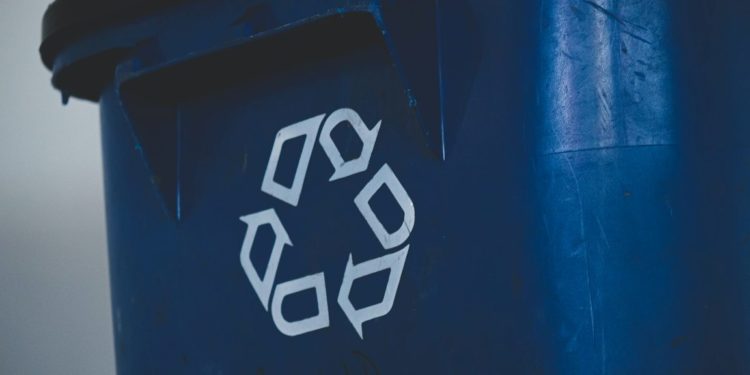Waste management is a very pertinent problem in our day and age. People gaining increased knowledge about climate problems came with a growing awareness that the debris resulting from human activities contributes to environmental destruction.
Leading to air and water pollution and directly contributing to climate change, overfilled junkyards are directly instrumental in the continuous destruction of ecosystems, making countless animal species vulnerable and a direct threat to human health and safety.
The situation is no laughing matter, as many of the harmful effects may be irreversible. With the waste output growing globally and expected to reach even more staggering figures in the coming decades, it’s becoming increasingly important for everyone to do their part to break this cycle.
If you are a business owner, your responsibility is not only that of an individual but also of an entrepreneur. You’re already on the right path if you’re considering developing a better waste management strategy.
The following suggestions can provide you with some ideas for key steps you should keep in mind when developing your plan of action.
Table of Contents
Assess the existing situation
The starting point of every improvement strategy lies in looking at your current program and determining its weak points. Look into how you’re managing waste at the moment. Gather data on the quantity of waste produced how much of it is recyclable and how much is not.
Following the waste assessment, you should be able to correctly identify the main problems existing at your company where waste is concerned. Developing a plan will be easier in this context.
Advance solutions that target the problems directly and efficiently. For instance, if you’ve observed that many of your employees are confused about which materials can be recycled, consider starting a training program where the issue can be adequately explained.
Make sure the whole team is properly informed of the ensuing changes, so you have optimal success rates.
Develop an improvement strategy
When building an improvement strategy, you need to focus on existing problems and create awareness and better habits in the people working for you. These approaches guarantee superior practices in the future. You want to make sure that the problems you’re solving remain solved. Going back to problems you thought were settled is frustrating and feels like there’s no progress.
Depending on the extent of the problem at your company, the process can be lengthy, and you are likely to notice more complications. Taking things one step at a time increases the prospect of you not having to deal with the same troubles repeatedly. Be sure to set an example for yourself. If employees see you maintaining a high standard through your behavior, they’ll feel motivated to do it themselves.
If you want to take it a step further and impart positive change at a societal level, you can start a campaign aimed at your customers. If you are confident that you can positively influence even a small number of people to adopt progressive habits, don’t hesitate to do it.
Getting involved in social issues is very important in our day, and whether you do it as an individual or as a business entity, you’re bound to shift someone’s perspective on things.
Focus on waste prevention
One of the best policies you can implement is to prevent waste as much as feasible. When you don’t produce as much junk in the first place, you don’t have to deal with its disposal afterward. It is also the best course of action for sustainability, as waste removal practices generate emissions themselves. Some strategies you can implement include:
- Reducing the use of products made from unrecyclable materials. Don’t order such products at your company anymore unless there’s no other alternative, and you’ll notice a marked reduction in waste outputs. Eliminate plastic as much as possible by ditching bottled water, and save paper by printing documents double-sided and only when necessary.
- Reusing existing products is likewise very important. If an item can be safely reused, don’t bin it. Give it a new life. By extending a product’s life and usability, you decrease your carbon footprint and the amount of rubbish you produce. Disposable tableware is a big problem in this area, responsible for substantial trash. Replacing these single-use items is an excellent place to start. Refillable printer cartridges, pens, and other office supplies are also suitable. You’ll notice that, in time, this strategy helps promote cost reduction as well.
- Donate all the stuff you don’t need anymore. Any surplus can help another business or the community, so you can look into the responsible services to guide you in this endeavor.
Expand usage of recycling methods
Recycling is crucial for any business that seeks to become more eco-friendly. The reprocessing of raw materials results in products developed with a reduced carbon footprint. If you are in Sweden and want to make sure your business is keeping up with the highest standards, hire a waste management service to help you work through all the intricacies of the process.
They specialize in recycling and are professionals at minimizing waste. You won’t have to worry about your waste being mishandled ever again, as they are constantly innovating and developing new means of optimizing the process. With a wide range of balers, compactors, presses, and crushers, their services are ideal for environmentally-aware customers.
Make it a business priority
Lastly, make sure that you keep the strategy in place and make it a prime concern in your business. As it is a growing cause of concern worldwide, you must always seek to improve your practices.
Stay up to date on improvements, be knowledgeable on recycling practices, and know what materials and substances you should avoid buying. Be a conscious consumer. Anytime you purchase something, consider how much you need and what you can do to prevent oversupply.
Make sure that they are reused or recycled after the products have outlived their usefulness. Recycle the packaging they were delivered into as well. It’s the best way to make a change, both for your business and the world.



















